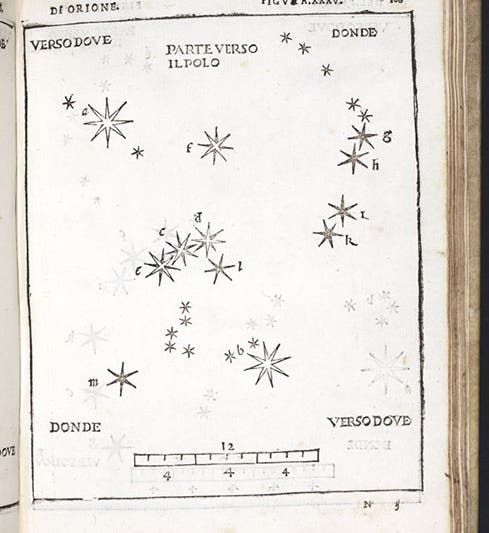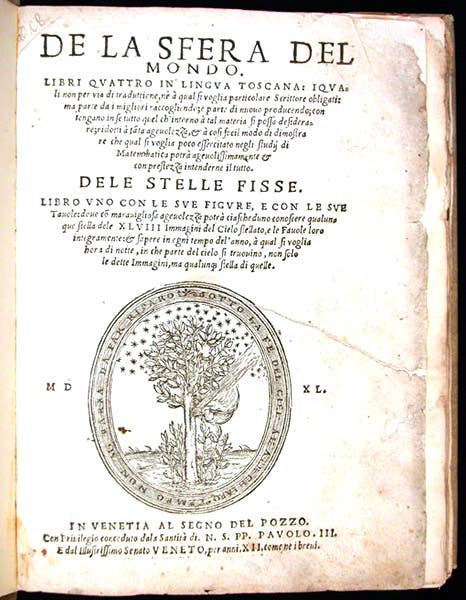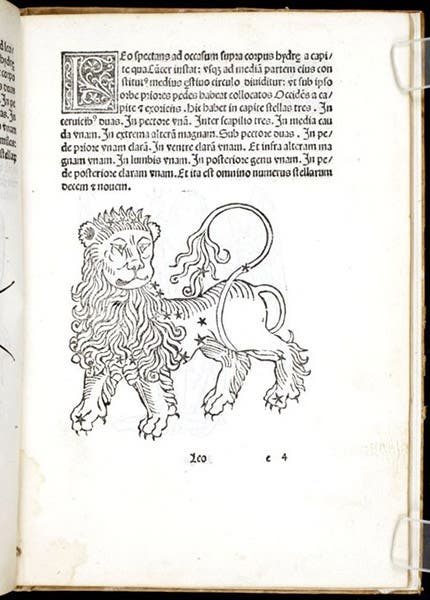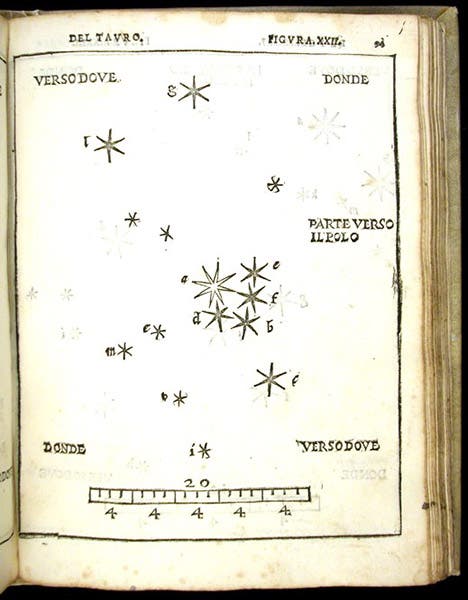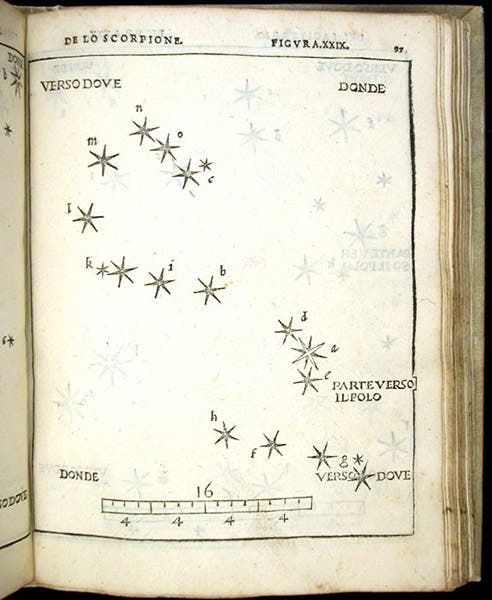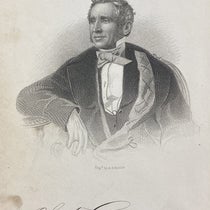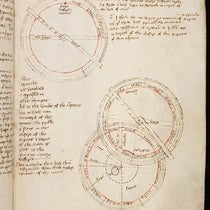Scientist of the Day - Alessandro Piccolomini
Alessandro Piccolomini, an Italian scholar, was born June 13, 1508, in Siena. He spent time at Siena, Padua, and Rome, and published a variety of works on Roman classics, philosophy, and cosmography. His most popular book was De la sfera del mondo (On the sphere of the world), a work in the manner of the medieval Sphere of Joannes de Sacrobosco, and akin to the commentaries on Sacrobosco by the likes of Georg Peurbach. But unlike Sacrobosco or Peurbach, Piccolomini attached to his Sphere a book called De le stelle fisse (On the fixed stars), which contains not only a star catalog (after Ptolemy’s star catalog), but 47 woodcuts that illustrate the classical star constellations.
There had been many books on the constellations since the invention of printing, of which Erhard Ratdolt's edition of Hyginus (1482 and 1485) is a good example. The 48 woodcuts show each of the 48 classical constellations, and they are quite charming, but they do not accurately depict the stars that form those constellations. Instead, the stars are added in where they fit best, and have no relationship whatsoever to the stars of the night sky. Our sample (third image) presents the zodiacal constellation Leo from the Poeticon astronomicon of Hyginus of 1482.
Piccolomini, for reasons unknown (he was not an astronomer), wanted the stars for each of his constellations to be accurately positioned, according to the best star catalogs. To make sure, he printed the positions of each known star first; the resulting catalog forms the first part of De la stelle fisse. And then he mapped the stars, constellation by constellation, in the traditional order set down by Ptolemy. To make his maps clearer, he left out the constellation figures, as if they might get in the way and obscure the star positions. We show you several constellations from the 1540 De la stelle fisse, including Orion, Taurus, and Scorpio, since those are all distinctive constellations, and you probably recognize the three stars in Orion's belt, or the V-shaped cluster that forms the nose of the Bull.
In the first (1540) edition, each plate is a woodblock with some of the text type-set, but with most of the letters marking the stars carved right into the block. There is no grid, but there is a scale on each plate, so you can see how the constellations differ in size. Piccolomini used four different-size symbols for the stars, with the large open white symbols representing the brightest stars, and the smaller ones representing stars of lesser magnitude. Piccolomini does not seem to have noticed that he left out one Ptolemaic constellation, Equuleus, the little horse, giving him only 47 constellations instead of the traditional 48.
In at least one later edition, the star maps are typeset, with type for each letter and individual pieces of type for the four sizes of stars. Those must have been fun to set up. There were at least 10 editions of De la stelle fisse in the 16th century, perhaps as many as 13. We have four editions in all, and interestingly, each one has different wood blocks. They are not any better, i.e. improved, but they are different.
Last month, we published a post on Albrecht Dürer, and stated that his two woodcuts of the heavens of 1515 were the first true star maps, since the positions of the stars were taken from Ptolemy’s star catalog and were as accurate as they could be made. For the same reasons, it is safe to say that Piccolomini’s collection of star maps of 1540 constituted the first true star atlas. It would be the first of many to come. Most of those later atlases, such as that of Johann Bayer, put the constellation figures back in, and we agree that this was a wise move aesthetically, but all of them put the stars where they belong in relation to each other, and in this, they took their cue from Piccolomini.
There are many portraits of Italian noblemen named Piccolomini, including two popes, but I could not find any portrait of our star-mapper.
William B. Ashworth, Jr., Consultant for the History of Science, Linda Hall Library and Associate Professor emeritus, Department of History, University of Missouri-Kansas City. Comments or corrections are welcome; please direct to ashworthw@umkc.edu.

